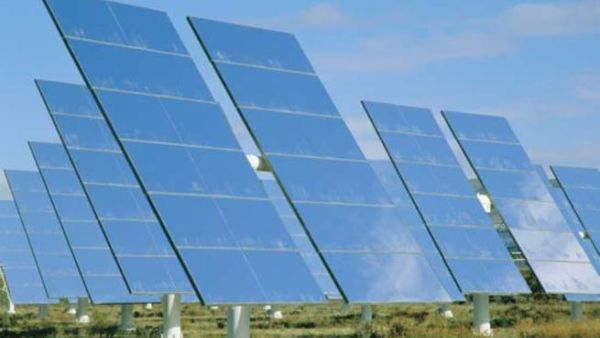Can solar thermal technology transform the economics of enhanced oil recovery (EOR), is the big question posed by a new report by Raymond James & Associates. Big Oil and solar companies haven’t historically been best pals. Traditional energy executives often look at their solar counterparts as naive tree-huggers, and in the reverse direction, the stereotype is often that of heartless polluters. The reality, however, is more nuanced.
As it turns out, solar technology can actually provide a solution for a major challenge facing many of the world’s leading oil producers. The challenge is enhanced oil recovery. The solution is solar-generated steam, says the report. The marriage between the two is a creative example of `green’ technology coming to the aid of a traditionally carbon-intensive industry. The report discusses the potentially lucrative economics of this early-stage concept and assesses the market opportunity. As the technology becomes commercialised, one of the more interesting consequences is a reduction in demand for natural gas, so this (eventually) can be chalked up as yet another bearish driver for the North American gas market.
EOR Models
A BrightSource solar EOR project In a world that inexorably moves closer to peak oil, maximising recovery of finite oil resources is not an option – it’s a necessity. This means that enhanced oil recovery (EOR) will assume steadily greater importance over time. While there are many models of EOR, the most energy-intensive one involves steam injection. Steam is particularly key for heavy oil properties, including (1) many fields in central California, (2) Canadian oilsands, (3) Venezuela’s Orinoco Belt, and (4) Oman and a number of other Persian Gulf countries.
The traditional model for heavy oil EOR has been to burn natural gas to generate steam. But what if this can be done more cheaply using solar? Yes, solar EOR can be done more cost-effectively than burning gas – even at today’s depressed gas prices. The fact that it’s greener is obviously true too, but what we’re emphasising is the commercial viability. People tend to think of solar as a way to generate renewable electricity, but here we’re not talking about electricity. We’re talking about using sunlight – specifically, concentrating solar thermal technology – to generate heat for the production of steam. Steam represents up to 60 percent of the cash production cost for heavy oil projects. Let’s look at the economics. There are several subtypes of solar EOR, associated with various companies – BrightSource Energy (US), GlassPoint Solar (US), Areva (France), Lotus Solar (Egypt), and others. Because all these projects are in their infancy, it’s important to take cost predictions with a grain of salt. For purposes of this report, we focus on the solar steam generator developed by GlassPoint, whose first commercial installation (and, in fact, the world’s first operating solar EOR project) started up near Bakersfield, California, with the customer being Berry Petroleum. This technology is designed to generate steam at the equivalent of ~$4.00 million cubic feet (mcf) gas, without taking any incentives into account. Inclusive of the 30 percent federal investment tax credit (ITC), the equivalent gas price drops to ~$2.80 mcf. (These cost figures are based on central California’s sunlight levels, or `insolation.’ In the Arabian Gulf, it could be as low as $2.00 mcf. Conversely, costs would be higher in Alberta.) While solar EOR compares favourably with conventional EOR at today’s spot price of US natural gas (~$3.90 mcf), what’s more important is that it provides an automatic hedge against long-term gas price escalation.
The 24-month futures strip (~$4.50 mcf) is well above the spot price, and our long-term forecast of $5.00 mcf is also considerably higher than our 2011 forecast ($3.75 mcf). For an oilfield owner that’s using solar EOR, there is no input cost risk, because essentially 100 percent of the cost is paid up front, i.e., the solar system. The equipment is designed to last 30 years. You think gas will be $4-5 mcf in 30 years (or even 15)? Neither do we. Solar EOR is also a hedge against the possibility (as remote as it may seem) of future cap-and-trade legislation in Washington. How much North American natural gas consumption could solar EOR displace? Let’s first state the obvious. If you’re looking for reasons to be bearish on the fundamentals of the North American gas market, we can think of some far better ones than solar EOR. The reality is that this is an early-stage technology, and its impact on gas consumption will be minimal until at least 2015. GlassPoint’s Bakersfield project is pilot-scale.
The only other near-term solar EOR project in the US is a BrightSource project (Chevron is the customer). In the sense of having minimal current impact on the gas market, this technology is similar to natural gas transportation fuels. The difference, of course, is that NGVs are an incremental positive for gas demand, whereas solar EOR is incrementally negative. Because California is the epicenter of US heavy oil EOR, it provides a useful case study. Five heavy oil producers in the state – Chevron, Aera Energy (joint venture between Shell and Exxon), Berry, Plains, and Occidental – together consume ~283 billion cubic feet (bcf) of gas per year (nearly 800 mmcfd) in EOR operations. This represents ~1.3 percent of total US gas demand, a figure that is perhaps surprisingly high. Solar EOR could never displace all of this consumption because, of course, there is no sunlight at night, and even during the day it is intermittent. In practical terms, a plausible target is 20 percent, which equates to a potential demand reduction of ~160 mmcfd.
The required land area for the necessary infrastructure is a relatively modest 6,300 acres. If all of this were built today, the estimated capital cost would be ~$6.3 billion, of which 30 percent would be offset with the ITC, hence a cost “net” to the buyer of ~$4.4 billion (even lower with accelerated depreciation). In actuality, the cost would almost certainly end up being less over time, as the technology gradually comes down the cost curve. Alberta’s oilsands offer another opportunity for the application of solar EOR, albeit not as lucrative as in California due to the lower insolation. (In Edmonton, Alberta, annualised daily insolation is 31 per cent lower than in San Francisco: 3.37 vs. 4.89 kWh/m2). At present, the oilsands – both open pit mining and in situ recovery – consume ~1.0 bcfd of gas, or ~11 percent of total Canadian gas demand. Applying the same 20 percent assumption as we used for California equates to a potential demand reduction of ~200 mmcfd. Given that oilsands production is set to meaningfully grow through at least 2020, the opportunity for solar EOR would increase accordingly. What about the Middle East?
Looking at the adjacent map of sunlight patterns, you probably notice the bright red swath across North Africa and the Middle East (places which are very much in the news these days, though, of course, for other reasons.) Although there are practically no solar incentives in the countries of the Persian Gulf, exceptionally favourable insolation – in some locations, exceeding even the levels of the Mojave Desert – is one of the factors that make solar EOR very promising there. The other factor is less obvious but even more important. With the exception of Qatar, Arabian Gulf countries are short of natural gas.
Oman, the UAE and others are actually gas importers! This is especially relevant for Oman, which is aggressively pursuing EOR – for example at the Mukhaizna field, which is operated by Occidental. Because the gas these countries are buying could have been sold into the international liquefied natural gas (LNG) market, the price point is commensurately high – typically, upwards of $10 mcf. If solar EOR can compete against $4 mcf gas, imagine how lucrative the economics would be at gas prices that are two to three times higher. Again, the key point is the direct economic savings – the technology’s green aspect is merely icing on the cake.
Conclusion
EOR is an increasingly important driver of US and global oil supply. EOR for heavy oil entails steam injection, an energy-intensive process that has traditionally been based on natural gas. As it turns out, concentrating solar thermal technology can produce steam at costs that are comparable or lower than the conventional process – even without taking solar incentives into account. In California, for example, solar EOR has an estimated cost structure equivalent to ~$4.00 mcf gas, dropping to ~$2.80 mcf with the federal investment tax credit. Solar EOR can therefore improve heavy oil economics, benefiting producers in such geographies as California, Alberta, Venezuela, and perhaps most of all, the Arabian Gulf. On the flip side, the reduction in gas consumption for EOR would be incrementally negative for gas demand. While solar EOR is an early-stage concept that will take time to become fully commercialised, this represents a unique example of solar technology and the oil industry coming together.








